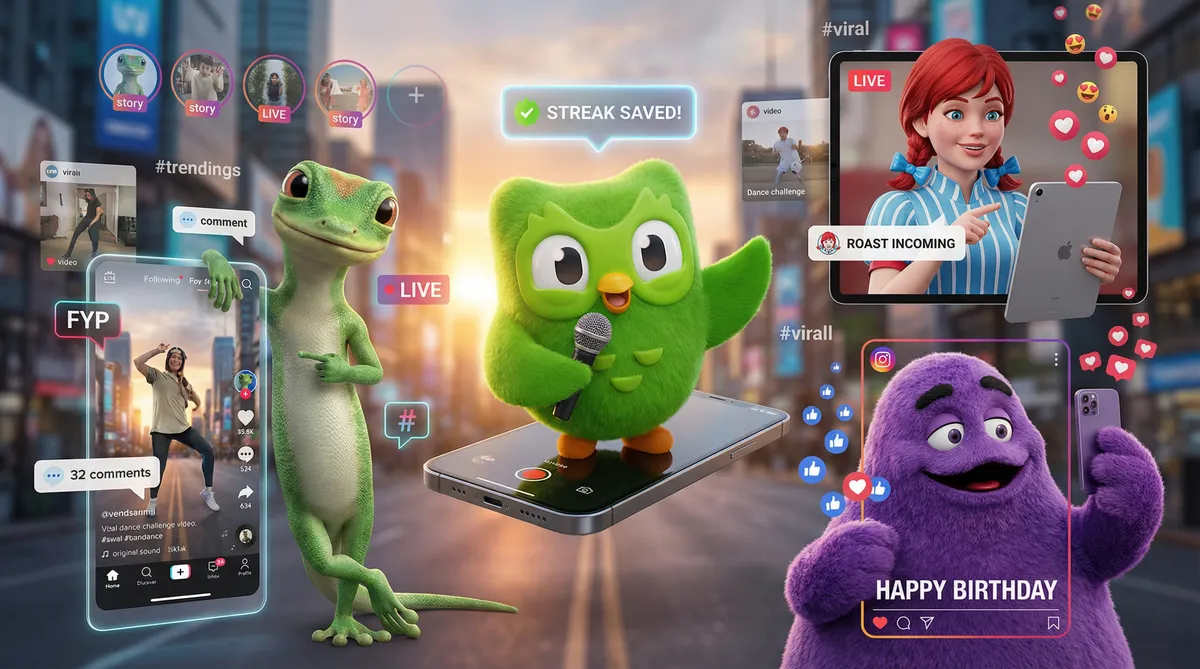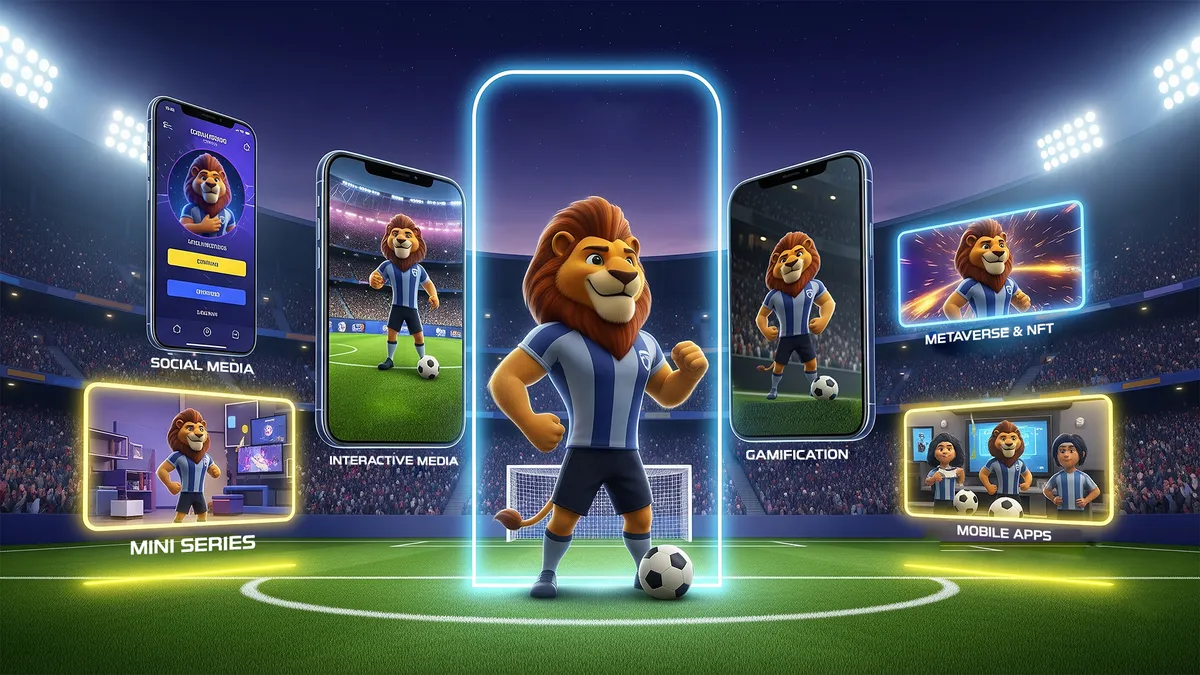
Key Takeaways:
- AI-enhanced mascots resolve engagement gaps for diverse audiences by delivering personalized, multilingual content across digital platforms.
- The six-stage process begins with defining team identity and digital persona, followed by concept design and AI integration for responsive behaviors.
- Implementation embeds mascots into chatbots, social replies, and metaverse events, while monitoring ensures adaptive performance and data privacy.
- Licensing protects intellectual property for revenue streams like apparel and virtual goods, extending mascot utility beyond initial creation.
- Future adaptations enable global reach through cultural customizations and scalable learning, aligning with evolving entertainment demands.
Sports mascots are the living, breathing extension of a team’s brand. However, creating a modern sports mascot isn’t solely about designing a modern look and fuzzy costumes to do cartwheels (though those are cool too).
I’m talking about virtual, AI-enhanced sports mascots that live online, engage fans 24/7 on TikTok and Instagram, generate revenue for both college and professional sports teams through IP and sponsor advertising, and compete with human celebrities on social media for followers.
They also star in games and series, bringing your team’s brand to life in exciting new ways. Our blog article “Why Fans Love Virtual Football Mascots?” discusses their marketing benefits in detail.
These days, every professional sports club deploys physical mascots. Still, the true potential of these iconic creatures, especially when combined with advanced technologies like Artificial Intelligence, is often overlooked.
So…
Think of this article as a playbook: clear, actionable steps to make your mascot a digital superstar.
Stay tuned.
Why Are Modern AI-Enhanced Sports Mascots Essential in 2025?
Before we jump in, let’s take a moment to explore some of the challenges NBA and NFL sports teams in the U.S. often face today, and then discuss how integrating AI can address these issues.
Changes in How Fans Engage and What They Expect Today
First things first, diverse audiences.
Today’s fans come from all walks of life, from kids to seniors, from local fans to global supporters.
Traditional stadiums often fail to engage Gen Z and Gen Alpha (and next-generation fans), while many international fans can’t attend games in person. They expect a tech-rich, immersive experience with their favorite teams.
This is where a digital version of your team mascot plays a key role. It can interact with fans in real-time, providing data and insights, while tailoring its tone and content to different demographics.
Modern mascots for sports teams can respond to fans’ emotions and create personalized experiences. They can engage in short recaps, share meme-worthy moments, crack jokes, or hype up the crowd on social media, apps, or even in the metaverse.
They can provide multilingual content or host virtual international sports events for fans around the world,
Sponsor ROI Pressure
Secondly, there is an urge to boost sponsor ROI.
Sports teams in the us are usually under pressure to deliver value to sponsors using fan data.
Modern mascots for sports teams can eliminate that pain point, too.
How?
They trigger contextual sponsor moments through mini-games like “scan to win” or provide personalized purchase offers based on fan profiles.
Revenue Generation Challenges
The third is revenue pressure.
Recent Ipsos polling from May 2024 and March 2025 revealed that about 76% to 80% of Americans, and around 86% to 88% of sports fans, feel that attending games is too expensive and that there are “too many platforms” needed to watch..
That has created a serious concern for sports teams, having them seek efficient solutions to boost ticket sales, merchandise, and sponsorships.
An AI mascot can address these concerns by promoting merchandise, NFTs, or virtual events. It can assist fans in surfacing variable-price seats, help them discover the most economical options, and offer discount codes using its unique tone of voice.
Plus, AI can facilitate discovery and navigation through platforms. Imagine an interactive sports mascot answering fan queries like “How do I watch the game tonight?” based on zip codes, keeping them happy by saving their time and money.
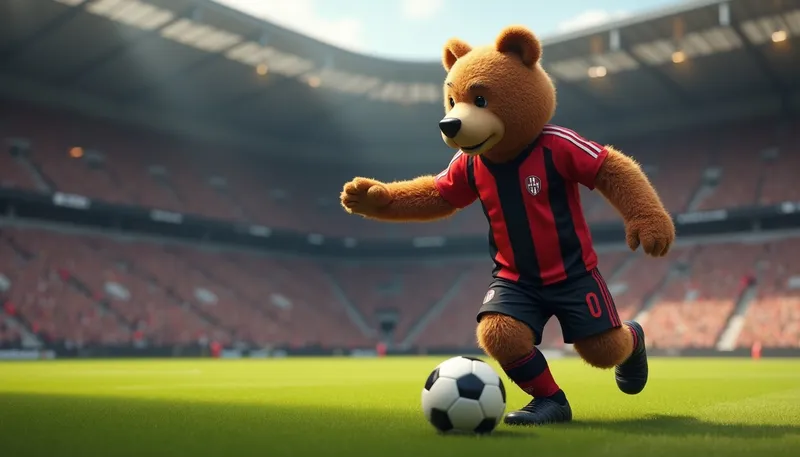
Digital-first Entertainment Landscape and Necessity for Multichannel Presence
Fourth, visibility in a competitive social media landscape.
Many clients who come to us find it challenging to figure out how to effectively use their mascots in branding and marketing. Often, clubs limit their mascots to just wearing costumes at events or sticking a photo next to their logo.
This is usually because they’re not sure how to make the most of their mascots or don’t have the right resources. But the truth is, mascots can make a much bigger impact than that!
Building your team’s brand on platforms like YouTube, Instagram, and TikTok (the leading platforms where Americans follow virtual influencers, as per a survey by Statista) requires near-daily, multi-format, and multilingual output.
An interactive AI ambassador can serve as your always-on content engine, drafting scripts, posts, replies, and polls, while scheduling platform-specific content to maintain a consistent tone.
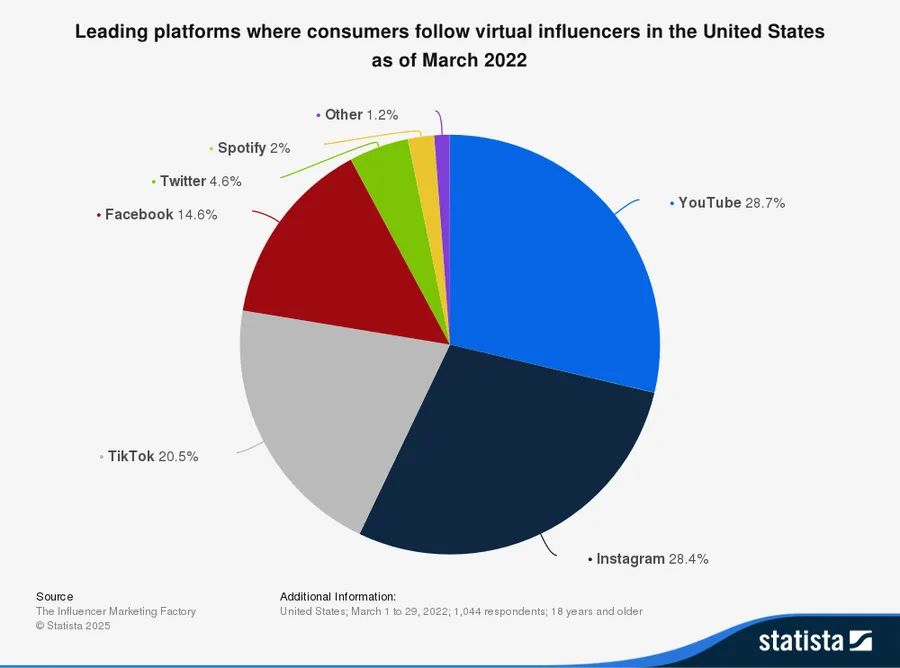
Athlete and Fan Harassment on Social Media
The fifth remains a serious issue that teams must address. An AI-integrated mascot branding approach helps here, too.
Sports teams can encourage sportsmanship through targeted storytelling with mascots, promoting positive behaviors and values like teamwork, perseverance, and community involvement, or stress the importance of ethics in sport.
Sounds awesome, right?
The question remains, though: How can we create interactive, modern mascots for sports teams that fully harness their unlimited potential in the world of sports?
Obviously, a DIY mascot won’t cut it. You need a strategic approach to make the best of your mascot.
Our 6-Stage Roadmap to Creating a Modern Sports Mascot
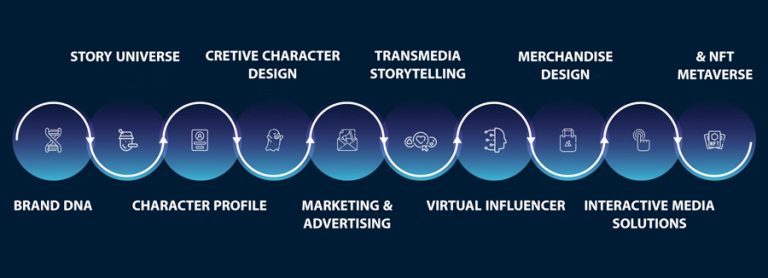
Some mascots for sports teams miss the mark. Why?
Some sports team owners lack an understanding of the professional sports mascot development process. They send ideas straight to the designer, which is a mistake. Why?
It’s simple, designers aren’t marketers or strategists. They focus mainly on what the client likes, not what truly works. At the enterprise level, this disconnect can lead to significant challenges.
Creating memorable mascots for sports teams starts with understanding your business. You need to analyze your marketing goals, develop a strategy, and create a marketing plan. It’s also important to manage the creative aspects and provide clear art direction before diving into the design.
If you send your ideas directly to a designer without going through the above-said steps, you miss out on the key elements that lead to a successful mascot.
Collaboration with a mascot total solution provider agency like Dream Farm Agency fills that gap.
We’re not just designers; we’re a marketing and advertising agency that specializes in character design. Our approach involves teams, and each team focuses on a specific step:
To understand the mascot total solution approach better, check out the step-by-step guide below.
Step 1: Adopting a Digital-first Mindset
Earlier, I discussed why mascots for sports teams aren’t just about a cool design.
Now, think of your team mascot as a digital extension of your team’s brand.
To get started, you need a clear mascot marketing plan.
First, define your team’s identity and goals
Who is your team? Ask yourself:
What are your team’s core values? Passion? Community? Grit?
What’s your mission? To inspire? To entertain? To influence?
What’s your team’s personality? Fun and energetic? Bold and fierce? Serious and competitive?
If your team already has a mascot, check if it aligns with these values. Does it reflect your team’s vibe? If not, it’s time for an upgrade.
Before upgrading it to a digital creature, make sure to keep the legacy alive. Many sports fans still love classic mascots. Your new mascot should capture the original’s spirit, values, and look.
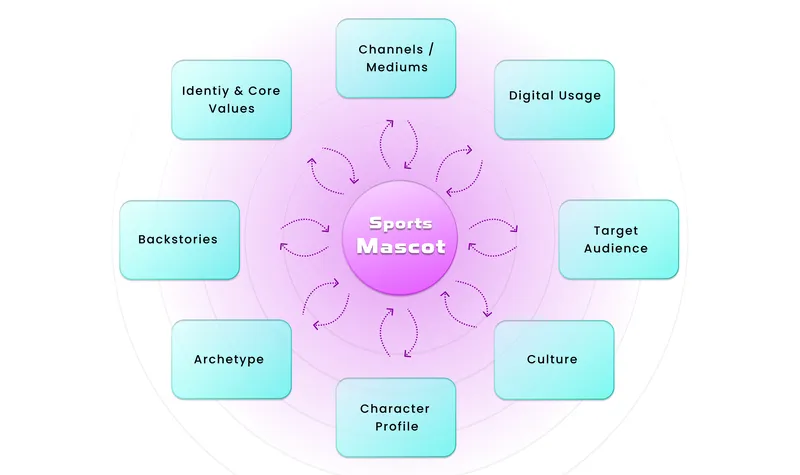
Next, create a digital brand persona
Your mascot needs a personality that works online and functions efficiently across various platforms.
Think about its role:
Will it be a social media influencer, posting witty updates?
A customer service bot, answering fan queries on your team app?
A live-streamer, hyping up fans during games?
Or an interactive companion in a virtual world?
Define its tone of voice: playful, knowledgeable, or maybe a bit sassy.
That might sound tricky, but don’t worry. We’re here to help you make the right choices.
Now, let’s discuss your fans and platforms.
Who are your fans? College kids? Casual observers? Hardcore sports buffs?
A mascot for a college team will look and act differently from one for a professional club. So make sure to identify your target market carefully and precisely.
Where will your mascot “live”?
Social media?
Your team’s website or app?
A metaverse environment?
Augmented reality (AR) filters or virtual reality (VR) experiences?
Each platform needs a tailored approach. A mascot on X might post quick, witty replies, while one in a VR game needs a 3D model and real-time animations.
Once you’re done with your audience and platforms, it’s time to set interactive goals.
What should your mascot do?
Here are some options:
- Simple interactions like answering FAQs like “When’s the next game?” or “Where can I buy tickets?”
- Conversational AI to have natural, open-ended chats with fans
- Emotional AI to respond to fans’ emotions; for example, cheering them up after a loss
- Real-Time Response, like commenting on live game moments or celebrating a goal
***Pro advice:
Check out our blog post “What Should You Do Before Creating Your Mascot?” for more on setting goals.
Step 2: Concept, Design, and Visual Development
It’s time to bring your mascot to life visually.
Where to start?
Begin by brainstorming the concept. What kind of mascot fits your team?
Here are some popular options to inspire you:
- Animals like a fierce lion, a sneaky fox, or a local creature tied to your city
- Mythical creations, like a dragon or phoenix for a bold, epic vibe
- Personified objects, like a talking basketball or a high-tech trophy
- Historical figures, like a character inspired by your city’s history
To give your mascot a more human touch, you can think of additions. For example, a team in New Orleans might create a jazz-loving alligator mascot with a trumpet.
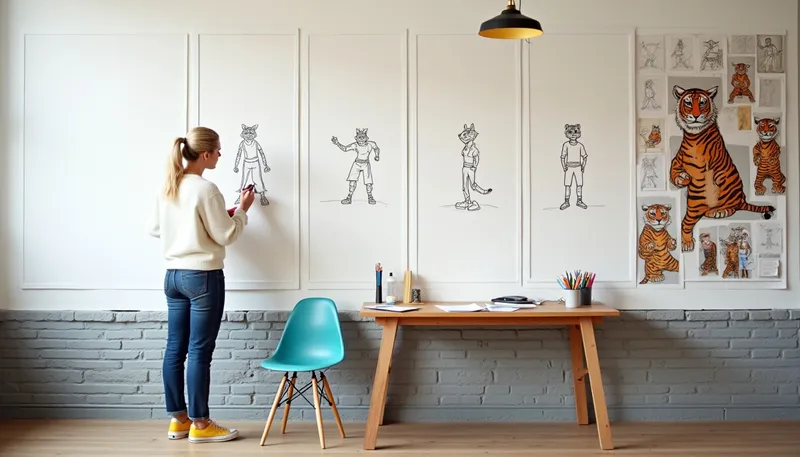
The next step is to develop a character.
What entails a good character?
Name. Think of something catchy and memorable. You may find our blog article “How to choose a brand mascot name?” helpful.
Personality traits. Whether your mascot is funny, wise, or mischievous, make sure it reflects the team’s identity and core values.
Superpowers or signature moves. Maybe your mascot shoots virtual confetti or does a signature dance.
Backstory (the story before the real story) and character profile. Without them, a mascot is just a draw. On the other hand, a mascot with a strong backstory and well-defined characteristics feels like a friend, not just an image.
You might find our blog article “Backstory and Character Profiles in Brand Mascot” helpful in that matter. However, partnering with character design and creative storytelling experts is a safer choice.
Creating a mascot character might seem simple at first glance, but it’s actually as complex as developing a movie character.
You need a deep understanding of storytelling, professional skills, and a lot of creativity. That’s why working with mascot agencies like Dream Farm can give you a competitive advantage.
Let me share an example from one of Dream Farm Agency‘s projects: The Land of Legends.
One of the biggest challenges for our clients was creating lion characters that were unique, lovable, and relatable to people of all ages, all while staying true to the brand’s identity.
Curious about how we tackled this challenge? Check out the case study of the project on the Dream Farm website.
If you’re thinking about adding a mascot to your communication plan, our team is here to help.
With over 10 years of experience and the development of more than 2,500 characters, we’ll guide you through every step to unlock the full potential of your new team member!
Learn more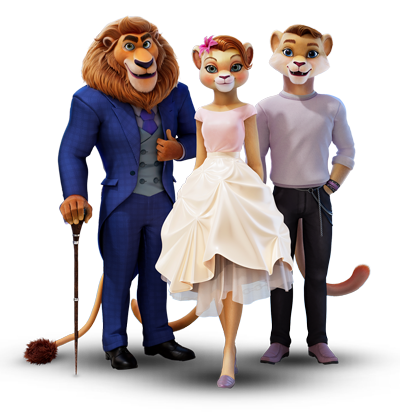
Done with character design and backstories?
Let’s design the visuals.
Here is how:
2D sketches: The designer starts with rough concepts to establish the overall style.
These sketches help them explore different ideas and find the direction that best represents your team.
Concept art: The designer then produces detailed drawings that showcase the mascot’s expressions and poses.
This step is crucial for visualizing how the mascot will interact with fans and represent your team’s spirit. That also includes using bold colors, clear facial features, and accessories tied to your team.
It’s absolutely vital to ensure that the designs created work seamlessly across various mediums, including physical costumes, merchandise, and digital formats. This versatility is vital for maintaining a consistent brand image.
Additionally, the design must be scalable; it should look fantastic whether it’s displayed as a tiny app icon or as a giant graphic on a stadium screen.
To avoid pitfalls, we recommend leaving the job to professional character designers like us (unless your club has an in-house team of mascot creation experts).
What if your team has an existing beloved mascot?
Well, you don’t have to ditch its legacy. Keep its core look and personality, but add digital flair. Let’s say your mascot is a pirate; give it a holographic sword for VR appearances.
Step 3: Integration of Artificial Intelligence
Finally, we’ve arrived at the most exciting part of your mascot creation journey!
Here’s where the magic happens. We give your mascot a brain to think, interact, and engage.
Choosing the right AI technology matters most here, as different AI tools power different abilities.
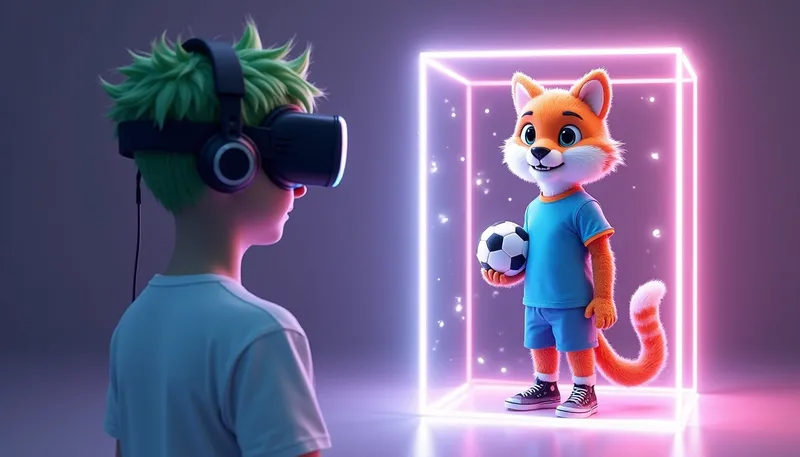
Remember the mascot’s goals you set in Step One? Pick the tech that perfectly matches those goals.
What next?
You need to build the brain and knowledge base. In other words, your mascot needs to know your team inside and out.
How?
We feed the AI info about your team’s history, players, stats, and brand voice.
We fine-tune the AI to match your mascot’s personality. Want it to be witty? We add some humor to its responses. Want it formal? We keep it polished.
We program the AI to handle specific scenarios, like celebrating a win or dodging tricky questions it can’t answer.
Let me clarify it with an example: some fans ask, “Why did we lose last night?” The mascot could reply, “Tough game, but we’re roaring back next time! What’s your favorite play from the season?”
Let’s not forget the role of infrastructure and data. AI mascots need solid tech to run smoothly. At Dream Farm Agency, we ensure your mascot can handle thousands of fan interactions, especially during big games, playoffs, or viral moments.
Fan data privacy is a big concern here. Make sure to safeguard the fan data by implementing strict privacy policies. Be transparent about what information you collect and how it’s used.
Additionally, it’s essential to program the AI to avoid generating offensive or biased responses.
Finally, training the AI on diverse datasets helps prevent discriminatory behaviors and language. To support this, having a human moderator as a backup is absolutely necessary.
Step 4: Implementation and Platform Integration
Your mascot is ready to meet the world!
Now, you can integrate it into the selected platforms, websites, and apps.
How?
You can embed the mascot as a chatbot or virtual assistant to answer ticket FAQs, share game highlights, or offer personalized fan experiences, like custom birthday messages.
You can have it auto-reply to fan comments with witty responses, or post game-day hype videos or memes, and host live Q&A sessions and live events.
For in-stadium fun, it’s possible to use motion capture or facial tracking to let a performer “puppet” the mascot in real-time. Imagine your mascot dancing on the Jumbotron or reacting to a goal live!
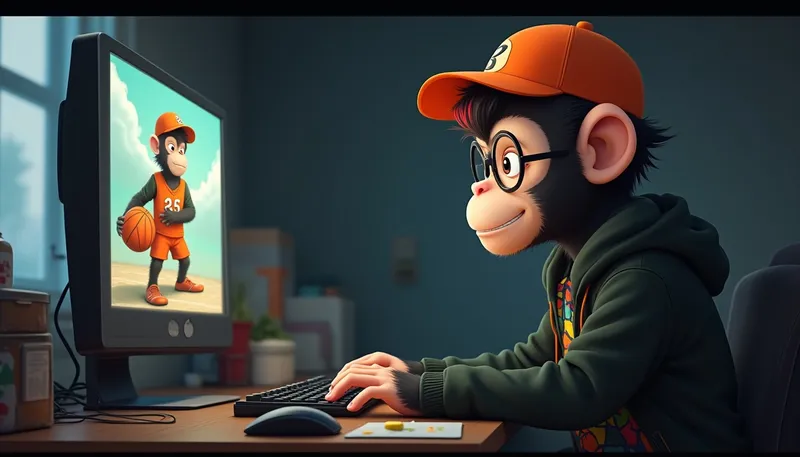
Let’s elevate the experience by integrating it into the Metaverse and using AR/VR technology.
You can have your mascot chat and hang out with fans in the Metaverse.
It’s also possible to develop AR filters for fans to snap selfies with the mascot, or design mini-games featuring the mascot, like a virtual dunk contest.
Whether it’s a chat window or an AR overlay, the design should be user-friendly and fun. It’s essential to test it to ensure fans of all ages can engage easily.
Step 5: Launch, Maintenance, and Monitoring
Once the previous stages are complete, it’s time to announce the mascot on social media with a teaser video.
Host a virtual event where fans can chat with the mascot.
Offer exclusive merchandise or NFTs featuring the mascot.
While you’re watching your mascot making a buzz out there, we’re monitoring and analyzing its performance across channels.
Wonder how?
We track how fans interact with the mascot. Are they engaging more on social media? Is the chatbot answering questions effectively? Are fans using the AR filters or playing the mini-games? We gather and use this data to spot what’s working and what needs tweaking. Accordingly, we fix any bugs.
At the same time, we update its knowledge base with new team info, add new features, like voice commands or seasonal animations, in case you require us.
Steps 6: Licensing Your Mascots for Sports Teams

That’s right. Your team’s mascot can be protected as intellectual property (IP) or trademarked.
A trademark is like a legal shield for things like your mascot’s name, design, logo, or even its catchphrase.
Imagine a rival team or a shady company selling knockoff T-shirts with a mascot that looks suspiciously like yours. Trademarking stops that nonsense, keeping your team’s reputation intact.
A trademark can help protect your mascot’s name, logo, and overall appearance, making sure people know where they come from.
For this protection to work, though, you need to register it and follow the rules in your area.
On the other hand, copyright covers original artwork and animations. Both of these rights are important for stopping anyone from using your mascot in a confusing or unauthorized way. Just keep in mind that you’ll need to keep an eye on things and be ready to take legal action if necessary.
Copyright can also come into play if your mascot involves original artwork or creative elements, like a specific backstory or animations. Basically, if your mascot is distinctive and tied to your club’s identity, you can protect it so no one else can copy or use it without permission.
Benefits?
To put it simply, licensing your mascot’s IP opens up a ton of opportunities to bring in extra revenue.
Once your mascot is trademarked, you can license its image to companies for things like apparel, toys, video games, movies, NFTs, or even food products.
Every time a company uses your mascot, they pay you a licensing fee or a percentage of sales. That’s extra money for your club without much effort.
To learn why and how to license your mascots for sports teams, study our blog article “Trademarking Mascot: A Legal Guide.”.
Creating a Modern Sports Mascot Meets Potential Future Requirements
Considering an investment that never goes down?
In a world where digital trends shift overnight; your team needs a mascot that doesn’t just keep up but stays ahead.
We’re living in a world where Duo the green Owl or a cheeky GEICO Gecko steals the social media spotlight. Digital avatars and virtual influencers are taking over platforms like TikTok and Instagram, racking up followers and even outshining some human influencers.
AI mascots are evolving along a similar trajectory.
Here is how your team mascot can evolve into a digital star of the future.
Strong Digital Presence Across Platforms
Your mascot needs to be where your audience is, no matter the platform. A digital mascot adapts effortlessly, from today’s social media to whatever new digital space pops up next.
Whether it’s a niche app or a global network, your mascot maintains a seamless, engaging presence. This flexibility means your brand stays visible and relevant, connecting with fans wherever they are without missing a step.
Take Duo, with a whopping 16 million TikTok followers and 4.6 million on Instagram, or Hello Kitty, charming 6 million Instagram fans with her global merchandise empire. Even the Saudi Green Initiative’s Namour is making waves.
These virtual stars aren’t just cute—they’re redefining how brands connect with audiences, and your ports club could jump on this trend.
Unlimited Potential for Learning and Evolving with Futuristic Technology Trends
Technology doesn’t stand still, and neither should your mascot.
Built with scalability at its core, our mascots evolve alongside advancements in AI capabilities and digital tools.
As tech gets smarter, AI-born characters can handle more complex tasks, like delivering tailored fan interactions or integrating with new systems. Thus, your mascot remains a powerful asset, ready to take on whatever the next wave of innovation brings.

Breaking Barriers for Global Fans
Football is a global language, and AI mascots speak it fluently. They can chat in multiple languages, use local accents, or even communicate in sign language for disabled fans. Picture your mascot rocking cultural outfits to celebrate the host city or bantering in Spanish, Hindi, or Arabic.
This inclusivity builds bridges across borders and generations, making every fan feel seen. Unlike physical mascots, who are limited by logistics, AI mascots bring the club’s spirit to every corner of the world, fostering loyalty that’s as diverse莲 as the game itself.
Great for Virtual Worlds like Metaverse and Beyond
The future of engagement is immersive, with spaces like the Metaverse redefining how brands connect.
Modern sport mascots are created to shine in these virtual environments, whether hosting events in a digital arena or interacting in 3D social hubs.
Scalability and Cost-effectiveness
Sports are the major source of the world’s entertainment, and modern sport mascots are here to keep fans buzzing 24/7.
Unlike traditional mascots, who shine in stadiums but fade off-field, AI-enhanced mascots can always be active and visible, appearing at stadiums, attending virtual parties, and participating in online streams simultaneously.
No geographical barriers, no scheduling conflicts, no logistical headaches.
Costs?
They are worth it when you consider the value they generate.
You build them once, and they’re good to go forever.
A Long-Term, Dynamic Asset
Investing in a modern mascot is about securing value for years to come. They grow smarter as technology advances; they adapt to new platforms; they integrate with emerging tools, they generate revenue in unexpected ways; and they shape new trends in various industries.
Conclusion
Long story short, clever storytelling plus a winning marketing strategy are key to creating a modern sports mascot.
The future of sports entertainment belongs to AI-born characters.
Whether it’s animations, live streams, games, virtual worlds, social media, or a totally new digital medium, AI-powered modern sports mascots are breaking borders to capture fans’ hearts worldwide. They will evolve with trends, acting as a winning play for college and professional sports clubs.
Dynamic storytelling and interactive content will be the pulse of team mascot branding, and what we do is help you be prepared for the future.
Here is how.
In the dominance of AI, sports team mascots need to represent a blend of pioneering technology, creative art directions, clever storytelling, and result-driven marketing strategy.
At Dream Farm Agency, we offer an all-in-one sports mascot solution, walking you through every step, from AI-enhanced sports mascot creation and implementation to marketing, monitoring, and maintenance.
Curious about pricing? Don’t hesitate to contact us.
- You may find our article on “FIFA World Cup Mascots” helpful as well, as it explores the topic from a new angle, reviewing their history, ranking, and future trends.
- To learn about other examples of team mascots, study our inspiring article “45 Famous Sport Mascots that Bring Teams and Fans Together”.
FAQs
How long does the professional sports mascot development process take?
The entire professional mascot development process, from the initial concept and design to character development, costume construction, and the big reveal, usually takes anywhere from 6 to 12 months.
It really depends on the complexity of the design and the number of stakeholders involved, but you definitely need to plan for a significant lead time.
Can I work with our existing sports mascot, or do I need to start completely fresh?
Absolutely, you don’t always need to start from zero! We can definitely work with an existing mascot.
We often help teams with a “mascot refresh”. This could mean creating a digital or AI-enhanced version of the existing sports mascots, or a full personality and backstory update to align with the current marketing strategy and the selected platforms and media.
Can sports mascots be updated or modernized without losing fan connection to existing characters?
Yes, they can! We adopt a thoughtful, transparent approach that honors your original sports team mascot’s spirit.
That includes subtle design updates for digital platforms, a refreshed, high-quality costume, and often a new “story” or updated behavioral traits, all while respecting the core identity the fans love (Getting fan input is often crucial).
How do AI-enhanced sports mascots interact with fans differently from traditional ones?
While traditional mascots excel at in-person, physical, and emotional interaction (hugs, skits, high-fives), AI-enhanced mascots are geared towards hyper-personalized, data-driven, and digital fan engagement.
This could mean AI-powered digital mascots (like chatbots or AR filters) providing fans with instant, customized content, real-time stats, or personalized video highlights based on their favorite player or moment; something a human in a suit simply can’t do in real-time.
It’s about blending the authentic energy of the human performer with the efficiency of digital personalization.

Leila
